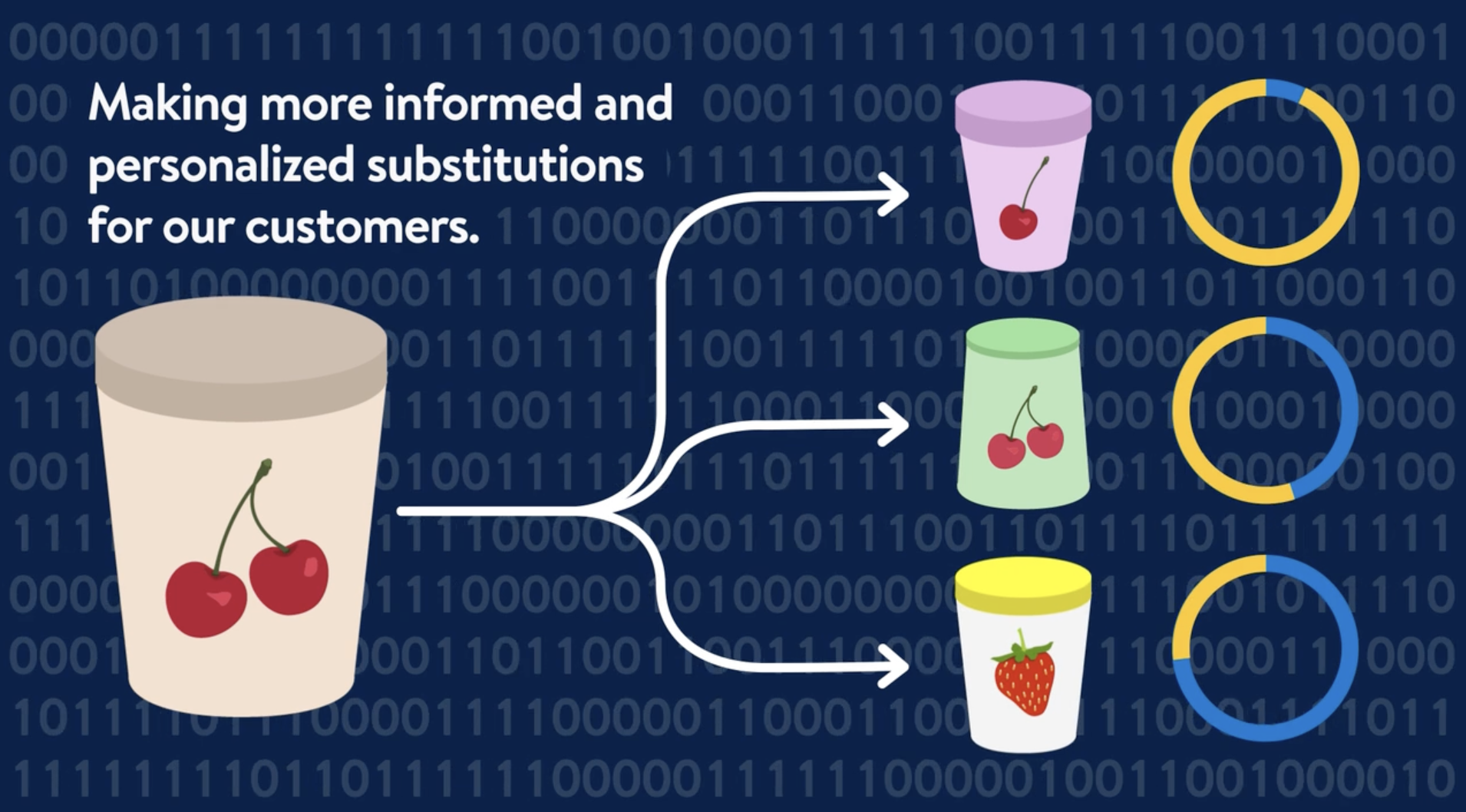It’s no surprise that the coronavirus pandemic has changed the way we shop, especially when it comes to groceries. Grocery delivery apps experienced a record number of downloads in March 2020, and by the following month, Walmart Grocery (which is now integrated into the Walmart app) surpassed Amazon as the No. 1 shopping app on both Google Play and the App Store. But even as pandemic restrictions have eased, consumers are still using ordering groceries for delivery or pickup more frequently than they were pre-pandemic.
As Walmart’s grocery delivery services have continued to boom, posing competition to companies like Amazon and Instacart, the tech that Walmart uses has expanded too. Today, Walmart shared information about how it’s training its AI to make smarter substitutions in online grocery orders.
Bringing this technology to grocery delivery isn’t novel by any means. Last May, Walmart reported how it used to AI to determine eligibility for its Express delivery service, which was brand new at the time. A year into the United States’ coronavirus outbreak, Instacart engineers reported that they crunched “petabytes daily to predict what will be on grocery shelves and even how long it will take to find parking.”
So what makes Walmart’s AI for grocery substitutions unique? According to Srini Venkatesan, an executive vice president at Walmart Global Tech, it’s the sheer quantity of data that Walmart can use to teach its AI. Over 200 million people shop at Walmart in-store and online each week for more than 150,000 different grocery products. The AI uses that data to predict consumer behavior, preferences and needs.
“The tech we built uses deep-learning AI to consider hundreds of variables — size, type, brand, price, aggregate shopper data, individual customer preference, current inventory and more — in real time to determine the best next available item,” explained Venkatesan. “It then preemptively asks the customer to approve the substituted item or let us know they don’t want it, an important signal that’s fed back into our learning algorithms to improve the accuracy of future recommendations.”

Image Credits: Walmart
Rather than asking a personal shopper to make a quick decision about how to substitute for cherry yogurt (do you get a different flavor from the same brand, the same flavor from a more expensive brand, and so on), the AI makes that choice for them. Walmart started developing this algorithm last year, and in the time since, customer acceptance of substitutions has improved.
“We were at about 90% before this algorithm rolled out,” said Venkatesan. “We are now around 97% to 98%.”
In the last year, Walmart doubled its number of personal shoppers to over 170,000 workers. About 3,750 stores are enabled for order pickup, and 3,000 stores are enabled for delivery, which covers 68% of the population. Earlier this year, Walmart dropped the $35 order minimum on its Express delivery service, a competitor to Amazon’s Prime Now.
